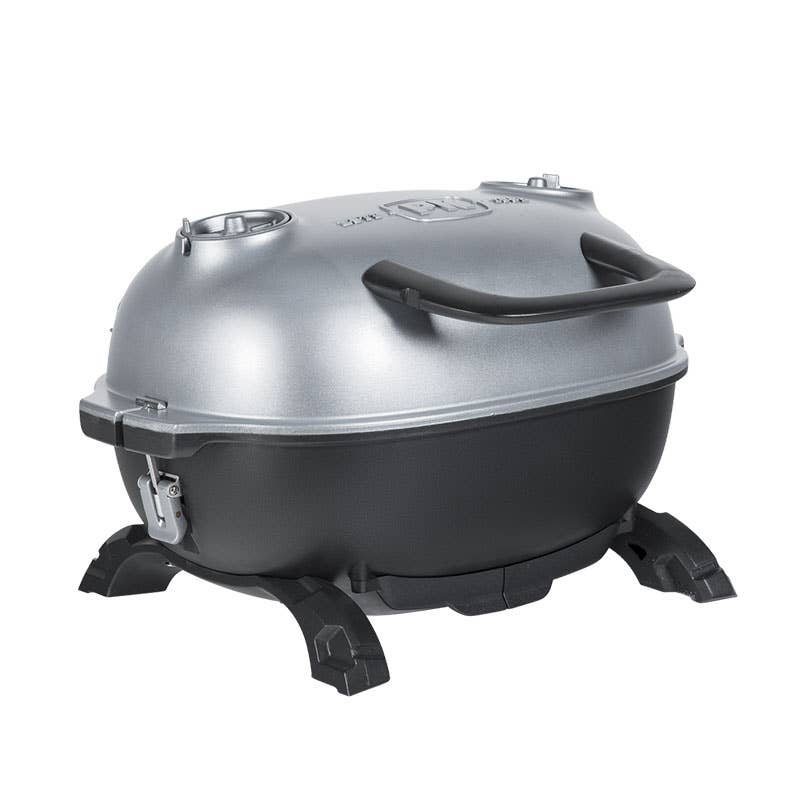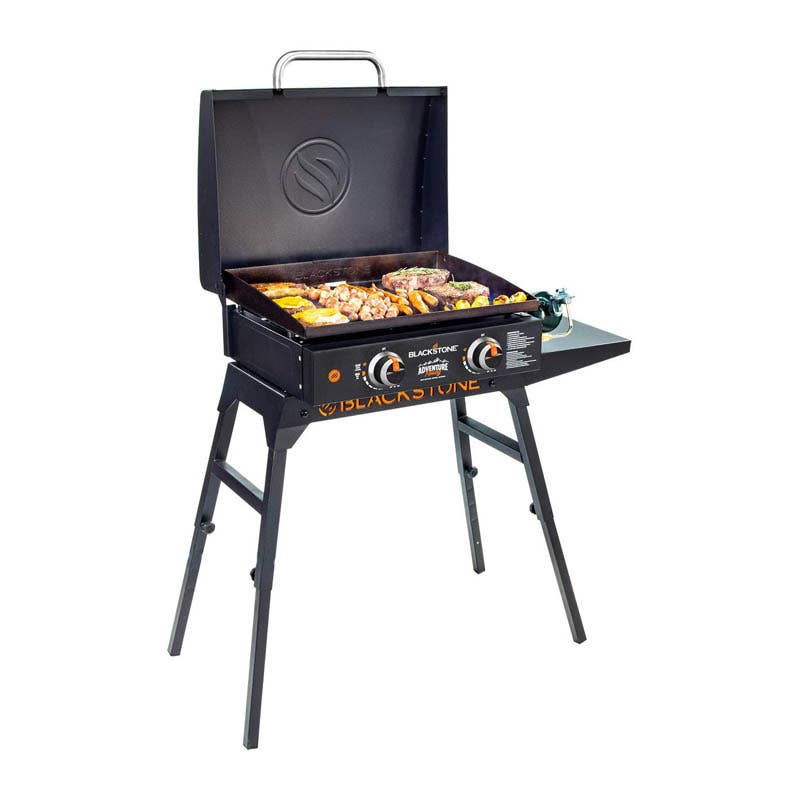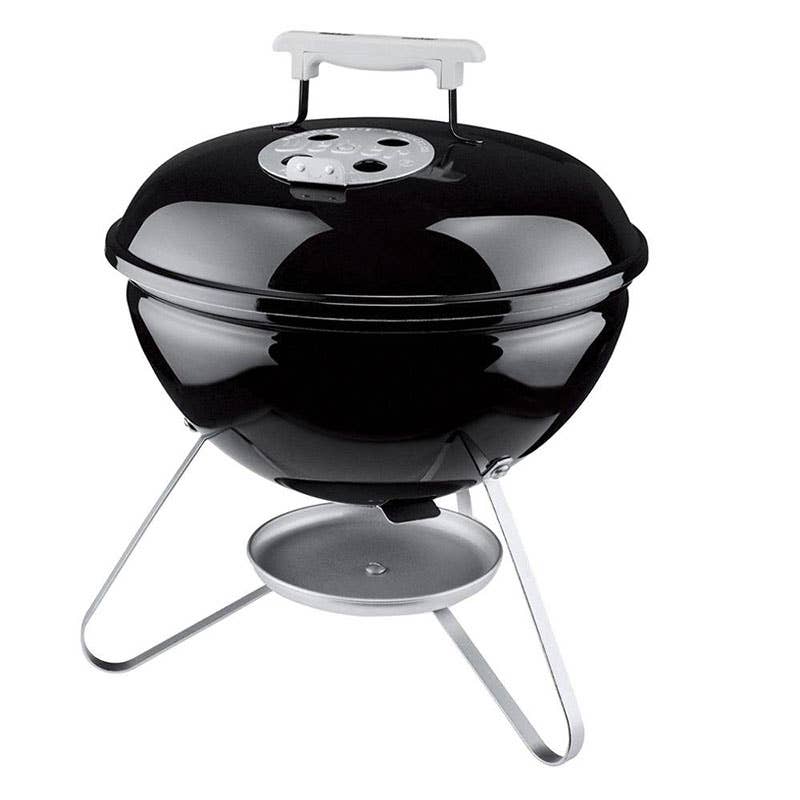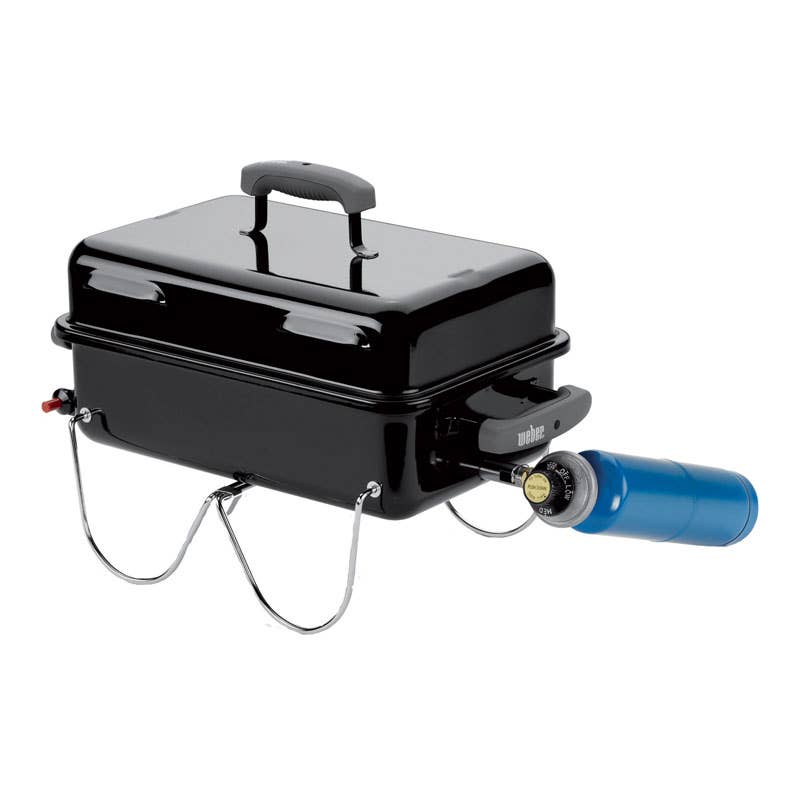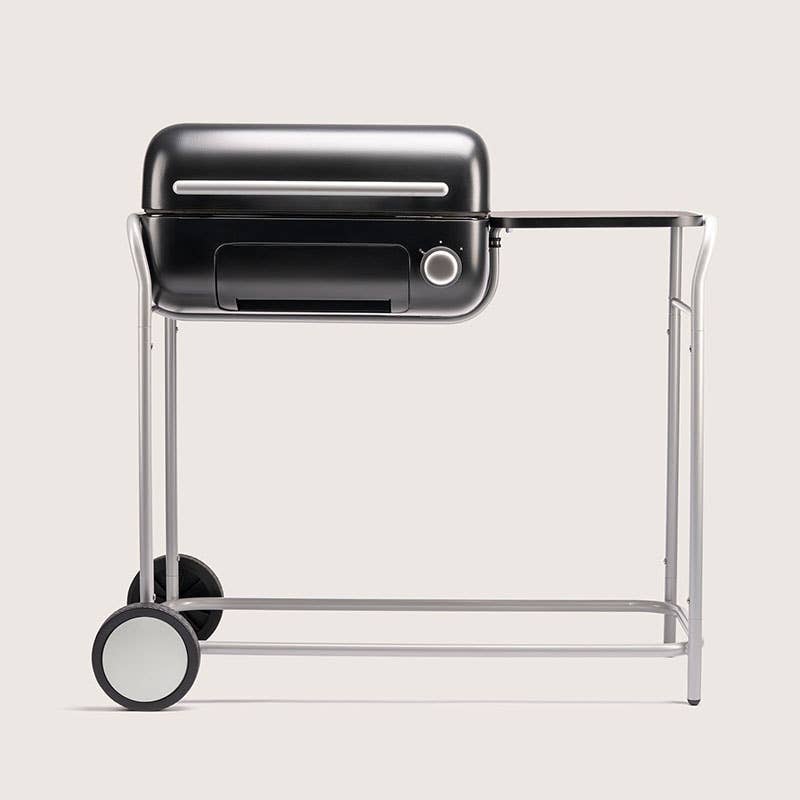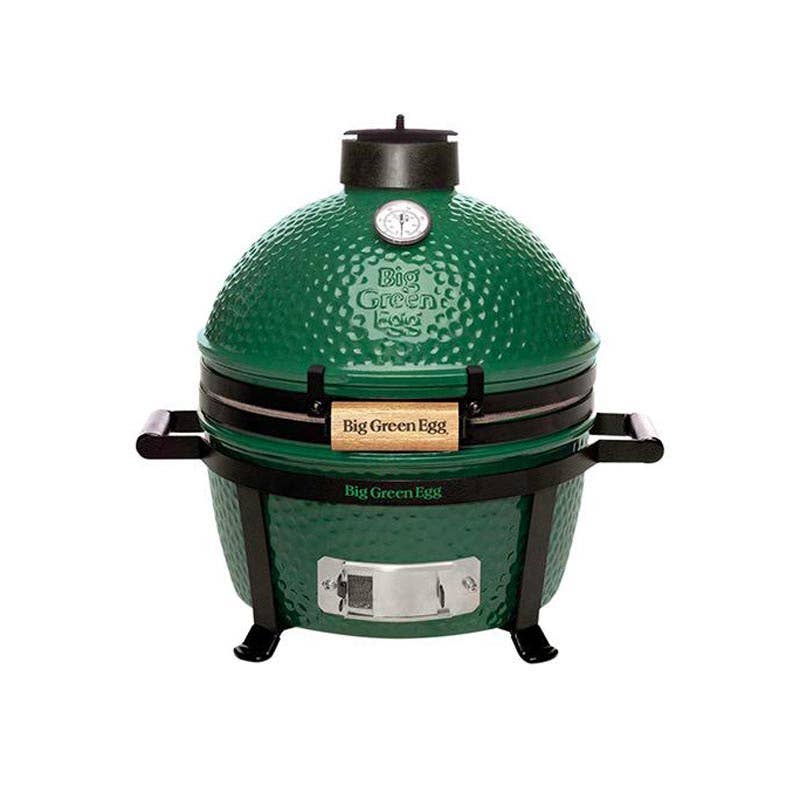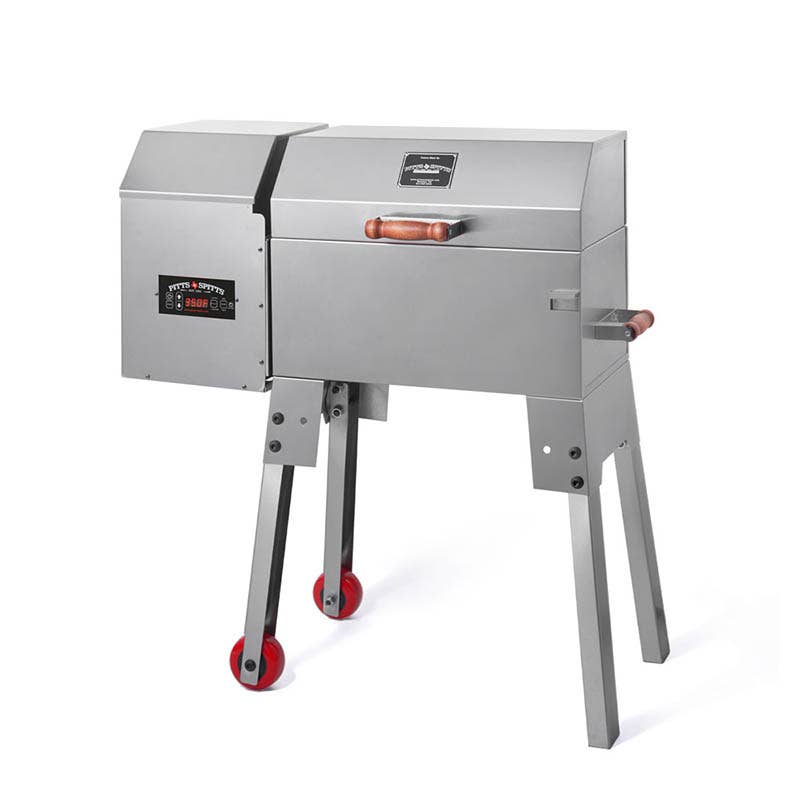The Absolute Best Portable Grills for Your Next Outdoor Adventure
Upgrade a camping trip or tailgate.
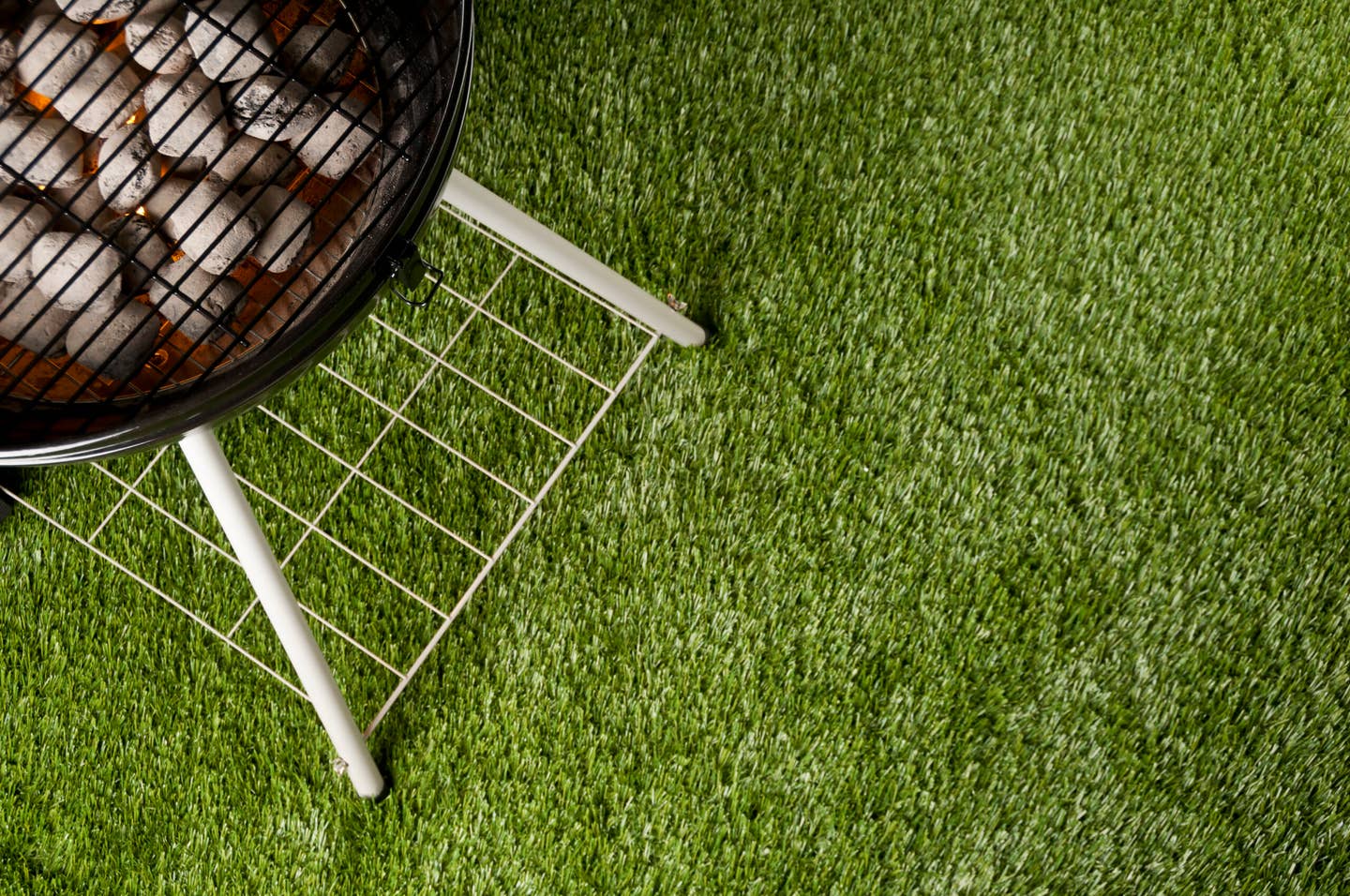
Half the fun of outdoor grilling is the ability to do it basically anywhere. While portability isn’t a top priority when selecting a backyard grill, whipping up a feast further afield, be it a beachside BBQ or campsite cookout, requires one that’s as ready to hit the road as you are.
Just like their full-size, stationary counterparts, portable units are available in an array of fuel types, shapes, sizes, and price ranges. Once you’ve landed on the best option for your needs, “don't forget your accessories!” says Jess Pryles, live fire cooking expert and author of Hardcore Carnivore. Grilling on the go means “you're going to need some tongs; they’re all too easy to forget,” and the last thing you want at a summer cookout is to find yourself hamstrung and hungry.
We’ve tapped Pryles and three more seasoned experts for their go-to picks, plus their tricks and tips for outdoor grilling all summer and long beyond.
- Best Overall: PKGo Camp and Tailgate Grilling System
- Best Gas: Blackstone Adventure Ready Griddle
- Best Value, Charcoal: Weber Smokey Joe Portable Grill
- Best Value, Gas: Weber Go-Anywhere Gas Grill
- Best Technology: Spark One Precision Grill
- Best Ceramic: Big Green Egg MiniMax
- Best Cast Iron: Lodge Cast Iron The Kickoff Grill
- Best Pellet: Pitts & Spitts Rendezvous Travel Pellet Grill
Our Top Picks
Best Overall: PKGo Camp and Tailgate Grilling System
Best Overall
Weight: 39.5 pounds | Type: Charcoal | Materials: Aluminum exterior with cast iron grates
Pros
- Double grilling space
- Rust-resistant
- Versatile
Cons
- Bulky
- Pricey
Why we chose it: A multipurpose grill that doubles in size when flipped.
David Gill, co-owner of Wildwoods BBQ in New Jersey, loves the innovative, sleekly-designed PKGO. “It’s super lightweight, small, and works fantastically. It’s so portable, yet you could easily feed 50 people,” he says. The two hibachi-style grills are encased in a rust-resistant aluminum exterior that holds up to saltwater— perfect if you’re grilling near a beach. And its proprietary four-point venting shape allows tons of grilling versatility. “You can directly grill on high heat if you’re cooking steaks, hog dogs and burgers, but you can also treat it as an oven to get smoky flavor and do some slow cooking,” he says. As his personal pick, Gill’s used this portable wonder for four years, with nary a sign of rust. “I’m gonna say this one’s lasting the distance!”
Best Gas: Blackstone Adventure Ready Griddle
Best Gas
Weight: 64.5 pounds | Type: Gas | Materials: Stainless Steel
Pros
- Suitable for every meal
- Cools quickly
- Large cooking surface
Cons
- Bulky
- Pricey
Why we chose it: A flat-top griddle that makes quick work of everything from pancakes to paninis.
Going with gas? Campbell loves this large, griddle-style pick that runs off either a 1-pound or 20-pound propane tank. “It’s a great portable option that provides 22” of flat top griddle space for cooking, plus it’s lightweight, and it comes with a built-in stand and side table that fold up.” And using propane means a variety of temperature options for full menu planning. “I recently took this grill to the mountains and enjoyed an array of foods including pancakes, bacon and sausage in the morning, smash burgers with griddled onions for lunch, and a nice filet with griddled vegetables for dinner,” he shares. Staying closer to home? It’s also an ideal tailgate option because “it cools down and cleans up quickly to make sure you don’t miss any of the game,” Campbell says.
Best Value, Charcoal: Weber Smokey Joe Portable Grill
Best Value, Charcoal
Weight: Nine and a half pounds | Type: Charcoal | Materials: Porcelain-enameled exterior with plated steel grates
Pros
- Lightweight
- Affordable
- Durable
Cons
- Small
- Can be difficult to dispose ashes
Why we chose it: A lightweight grill that can go from the mountains to the beach.
This 14” charcoal model is a “classic that works really well,” says Elizabeth Karmel, a chef, food columnist, and cookbook author who specializes in barbecue, grilling, and Southern food. It’s also particularly affordable at under $40. The Smokey Joe has a traditional grill silhouette, with short legs propping up its stout porcelain-enameled lid and bowl. Karmel’s top tip? “Make sure you have really good charcoal. With a grill that size, it’s hard to get a good, consistent heat with charcoal that has a lot of filler in it.” Consider selecting a charcoal variety that’s 100% hardwood.
Best Value, Gas: Weber Go-Anywhere Gas Grill
Best Value, Gas
Weight: 13.5 pounds | Type: Gas | Materials: Porcelain-enameled exterior and grates
Pros
- Compact
- Affordable
- Durable
Cons
- Only big enough for two people
- Heat can be uneven
Why we chose it: A travel-friendly grill that’s more user-friendly than charcoal alternatives.
Karmel likes this simple, affordable,“very serviceable” gas grill that runs on a lightweight 1-pound propane tank (purchased separately). True to its name, “it’s perfect for camping, taking to the beach or tailgating, and easier [to use] than a charcoal grill,” explains Karmel. Newbie grillers will appreciate the fuss-free design and functionality. “Turn it on and in 10 minutes you have a grill that you can cook on—there’s nothing more convenient than that!” And it’s one of the most pint-sized choices around: “The legs fold up so you can carry it, or put it in a tote bag. For real portability you can’t beat it,” says Karmel.
Best Technology: Spark One Precision Grill
Best Technology
Weight: 103 pounds | Type: Charcoal | Materials: Porcelain-enameled exterior with cast iron grates
Pros
- Convenient
- Smartphone controlled
- Easy to clean
Cons
- Expensive
- Heavy
- Requires specific charcoal bricks
Why we chose it: A grill that offers the flavors of charcoal with the convenience of gas.
“The Spark is literally a game changer. Who knew the charcoal grill needed a makeover?” says Karmel, of this “super innovative and cool” direct-to-consumer offering. It’s unique point of difference? Instead of “The Spark is literally a game changer. Who knew the charcoal grill needed a makeover?” says Karmel, of this “super innovative and cool” direct-to-consumer offering. Its unique point of difference? Instead of traditional charcoal, “it uses a compact, compressed charcoal brick, so it’s a huge advantage to not have to wrestle with a big, messy bag of charcoal,” Karmel says. Plus, clean-up is a cinch: “The grill is designed to be so efficient it doesn’t even have a drip pan; everything falls right back on that brick and is instantly vaporized or burned up,” she says. A dial-operated fan controls the temperature (which can reach 900 degrees, allowing it to moonlight as a pizza oven, too), while an app connected to a phone via bluetooth makes grilling fool-proof. As for its portability quotient, it requires electricity and weighs in at over 100 pounds, making it ideal for a week-long Airbnb stay, less so for a night or two camping. “You can’t fit this grill into a tote bag, though it is on a cart with wheels,” says Karmel. In a pinch, purchase the battery pack to propel the fan if an outlet isn’t available.
Best Ceramic: Big Green Egg MiniMax
Best Ceramic
Weight: 76 pounds | Type: Charcoal | Materials: Ceramic with a stainless steel cooking grid
Pros
- Versatile
- Big enough for four people
- Heats fast
Cons
- Expensive
- Heavy
Why we chose it: A beautiful grill that cooks everything from pizza to ribs.
If versatility ranks high on your list, opt for a Kamado, an oval-shaped ceramic contraption inspired by ancient Indian and Chinese earthenware ovens and fueled by charcoal. Campbell recommends the Big Green Egg MiniMax because it “provides all of the versatility of the original Big Green Egg cooking system in a small and portable form,” he explains. From traditional grill fare (burgers and hotdogs) to low-and-slow BBQ or a perfectly seared steak, the MiniMax can manage it all, and does so fumed by easy to find lump charcoal. Campbell also praises its generous size and optional accessories such as a stand and side tables which “make the grilling experience even better.”
Best Cast Iron: Lodge Cast Iron The Kickoff Grill
Best Cast Iron
Weight: 28 pounds | Type: Charcoal | Materials: Cast iron
Pros
- Durable
- Affordable
- Great for searing
Cons
- Difficult to move
- Small
- Doesn’t include a lid
Why we chose it: A reliable cast iron product that’s made for searing steaks.
It’s tough to beat the durability of cast iron and if your grilling repertoire involves plenty of searing sans lid, à la kabobs, shrimp, vegetables and s’mores, Karmel suggests looking at Lodge Cast Iron’s portable options. She’s partial to the brand’s Portable Sportsman Grill, which is currently sold out from various retailers, but this even smaller model is very similar, and is especially ideal for tailgating, as its name indicates. “You can bring a pie pan along as a makeshift cover,” Karmel suggests. The Kickoff works best for occasions or settings you can drive right up to versus walking lengthy distances to the destination. “Despite the relatively petite dimensions, it’s cast iron, so it is heavy,” Karmel notes of it’s 30 pound weigh-in.
Best Pellet: Pitts & Spitts Rendezvous Travel Pellet Grill
Best Pellet
Weight: 90 pounds | Type: Pellet | Materials: Stainless steel
Pros
- Great for searing
- Easy to fold
Cons
- Expensive
- Heavy
- Requires electricity
Why we chose it: A grill that makes it easy to smoke meats on the go.
Partial to pellet? Pitts & Spitts has you covered. Pryles recommends this “brand new” and quite innovative travel-sized Rendezvous model that allows you to “smoke on the go.” With its smaller footprint and fold up legs, this petite smoker still employs the same smoking technology as the full-size options, so there’s no compromising in quality. It does require electricity, though Pryles notes many tailgating enthusiasts have a solution. “In Texas, a lot of people have trucks, and a lot of truck tailgates have a power outlet in them. When you live in a state where tailgating is life, you need to make it work!”
Things to Consider Before Buying a Portable Grill
Size
“Select the size based on where you are going, how many people you are cooking for and what you are planning to cook,” says pitmaster Chris Campbell, owner of Campbell’s BBQ Co., a catering company in Augusta, Georgia. Some small grills are deceptively heavy, so always consider the scenario and mode of transportation— walking miles to a campsite versus driving up to a tailgating spot. Pryles also notes that smaller isn’t always more convenient. “I’ve seen some grills that are so small, they kind-of become useless; especially if you’re cooking over charcoal, you want something with great airflow to feed the fire.” As a general rule of thumb, Pryles suggests erring on the side of practicality; select something that’s “really easy to throw in the car to go with you throughout the summer.” After all, the best pick is one you’ll actually use.
Fuel
Fuel is a key differentiator among grill types of any size and it’s common to have a strong personal allegiance to one variety. “Grills are a lifestyle decision; people identify as a charcoal griller or a gas griller or, these days with the rise of pellet grills, as a smoker,” says Karmel.
Propane provides fast, predictable and accurate heat, but lacks that classic campfire flavor charcoal gives off. For that, Gill likes Kingsford briquets, which get another vote from Pryles. “They’re uniform in size so you know exactly what kind of heat you can expect,” she explains. “Sometimes portable grills have really limited space for the actual fuel— you don’t want a huge lump of charcoal that doesn’t even fit under the grate.”
And to bring a bit of smokiness to a traditional grill, Pyrles suggests mixing in wood chunks and wood chips with the briquets. “For pork, you might do something like cherry wood with a bit of sweetness, or for beef, you could do mesquite or hickory. It’s a great way to add a little extra flavor.”
Time is another factor when considering fuel type, with propane being the fastest cooking option. And don’t forget to “plan ahead in terms of letting your grill cool down,” advises Pryles. “You don’t want to take the food off right before you plan to leave, because the grill might be too hot to handle. It depends on the grill’s material and fuel, but usually it’ll take at least an hour to get to the point where you can pack it into the trunk of your car without melting inside of it,” she says.
But ultimately convenience is key— even avowed fans of a particular fuel will mix it up depending on the setting and scene. “I think charcoal always tastes better than gas, but it also takes longer to heat up and cool down, so I pick my grill and fuel type based on where I’m going, what I’m cooking and how many people I’m cooking for,” Campbell explains. “It may not always be feasible to pack a bag of charcoal, but I can always find room for a one-pound cylinder of propane.”
Maintenance
Gill recommends a “good wipe out and clean after every use; don’t let the old ash stick in there, it’s a fire hazard,” he warns. “Careful for grease as well, which can cause grease fires.” He prefers to clean sans soap, just with “an abrasive brush, to leave all the flavors” on the grill grates. Karmel also underscores the importance of good, consistent grill hygiene habits, without aggressively or overly cleaning and possibly stripping flavor. Another indicator your grill needs some TLC? “A lot of times people open the lid and think, ‘Oh no, the paint is peeling!’ It’s not paint at all— it’s actually the carbon buildup from the smoke peeling off,” Karmel explains. “If that happens, and you’re seeing a few black flakes on your food, you know it’s time to clean your grill.”
Ask the Experts
What is the best material for a portable grill?
Karmel suggests looking for a “well constructed, heavy duty” option, regardless of how compact it is. “Make sure it’s not rickety; that a strong wind wouldn’t blow it over,” she says. Gill notes aluminum and ceramic exteriors will last a long time. For grills with a lid or door, Karmel warns against glass options. “When the fats and juices vaporize they turn into smoke, and that smoke gets collected on the inside of the grill, turning the glass black,” she explains. “So, you won’t be able to see through it, and it’s never as heavy duty as solid metal.” As for the interior construction, Pryles prefers stainless steel grates “because they’ll never rust. Portable grills go into storage, and you don’t want a rude surprise.” Karmel also suggests avoiding grills with too many cascading racks that cramp functionality.
How do I clean my portable grill?
High heat will do most of the hard work for you. “Always preheat your grill, no matter how big or small, with all the burners on high for a gas grill, or if it’s charcoal, put the lid on with all the vents open so it gets the maximum amount of oxygen in there, and it’ll burn off anything left over from the last cook,” Karmel explains. “Then, brush the cooking grates with a grill brush, which will also sterilize the grates before you cook on them,” After cooking, she says to essentially repeat the heat cleaning process then clean the grates with a brush. “If you do this every time you cook, it’s never going to be a big job to clean,” she says. Pryles also relies on “really high heat to clean the grates,” and if you’re using a brush, she recommends one made of natural bristle, not wire, which can leave pieces of metal behind. An annual deep clean with soapy water will also boost longevity. Pyrles cautions against Brillo pads, oven cleaner or other more aggressive cleaning methods, “because a grill is like a cast iron skillet,” she says. “The more you use it and get it seasoned, the better the food is going to taste, so you don’t want to wipe all that seasoning off. Don’t overclean it.”
How long will my portable grill last?
A quality grill with proper maintenance should last a long time. Before purchasing, it’s worth noting the warranty. “Many grills have a limited lifetime warranty, which means that the company stands behind it,” says Karmel. A grill without such guarantee may be a red flag. And, cautions Pryles, if the price is too good to be true, “that’s usually commensurate to how long you can expect it to serve you.”
Final Thoughts
A portable grill is a must-have for tailgates, camping trips, and beach vacations. For the best size, versatility, and durability, we recommend the PKGo Camp and Tailgate Grilling System as our top choice.
Methodology
We spoke with several experts to get their picks for the best portable grills. Additionally, we scoured retailers and searched through reviews, comparing them across sites to ensure accurate feedback. When looking for portable grills, we compared their size, material, and whether they need charcoal, propane, or pellets. Lastly, we made sure to include a range of price ranges and sizes to suit everyone from campers to football fans.
Keep Reading
Continue to Next Story
